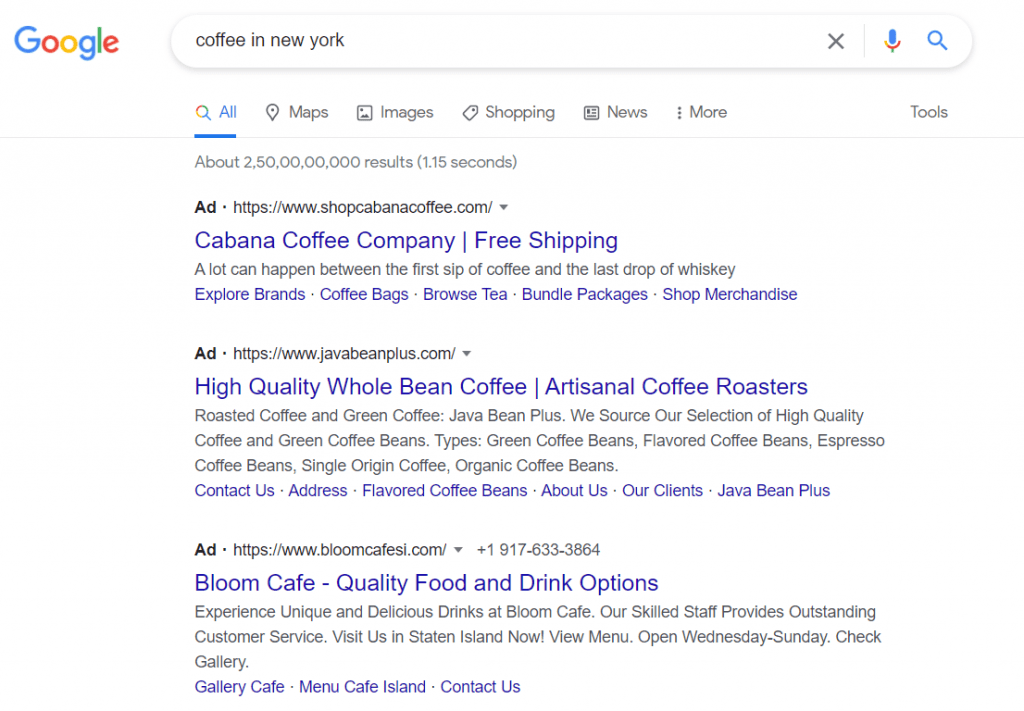What is social media competitive analysis?
A competitive analysis is a strategy where you identify major competitors and research their positives and negatives.
It’s a process of stacking up your own results against the big boys in your industry, so you can identify social media growth opportunities you can put to use.
How to do a competitive analysis on social media in 4 simple steps:
We’ve broken down this process into 4 steps that will help you in making your job easier.
1. Identify your competitors
The first thing you need to know to conduct a social media competitive analysis is identifying your competitors. From historical instances, you probably know who your competitors are. But, knowing competitors isn’t the only filter you apply here. Knowing competitors who leverage the most out of social media to grow their business is the right filter for you.
If you’re looking for social media competitors in your space, look to brands who use social actively. These are brands you may learn from and compare yourself to. Therefore, seek companies in your sector who use social media as a key part of their marketing plan.
Identifying your competitors may seem easy by the sound of it because you may already know the answer to it. But, that is necessarily not the correct answer.
So here are 3 steps that will help you in identifying your competitors:
a. Identify your competitive keywords
Having a thorough understanding of your keyword inventory will help you develop a clear picture of who you’re really competing against online.
The Google Keyword Planner is a great tool to identify your competitive keywords. Even if you don’t run ads on Google, the use of the tool is free.
To start, use the tool to analyze your website. You’ll get a list of relevant keywords, along with the average monthly searches and estimated level of competition.
Using this tool, you will KNOW your keywords with certainty.
If you want to know more about how you can use this tool, click here.
b. Find out who’s ranking for those keywords in Google
From the results, you generate from Google Keyword Planner, pick the top 5 to 10 highly relevant keywords to your business. Shoot these keywords into Google Search and give a long, informative look at the search results.
You will find all the businesses that are ranking for YOUR competitive keywords. Now, all you have to do is look at their websites. Almost every business that desires to grow has its social profiles linked to its website.
Now, all you have to do is enter the links to their social profiles in your competitive analysis spreadsheet.
BONUS: Pay special attention to the brands in your industry that are paying for Google ads to get their names above the organic search results, as they’re putting their money where their marketing ambitions are. Even if they don’t have great organic search rankings (yet), it’s worth checking out how they’re performing on social media.
c. Check who appears in social searches for those keywords
Businesses that rank for your keywords on Google are not necessarily the same ones that rank well on various social media platforms. Since you are doing a ‘social media’ competitive analysis, considering the ranks on social media platforms is not futile.
So, pluck in the necessary keywords on Facebook, Instagram, and other platforms, and find brands that show up first.
Choose the top 3 competitors
By now, you must have a long list of potential competitors. But, the right way to approach this process moving forward is to narrow down your competitors. This will filter out the noise that comes with the process. This is only going to help you in making quick and accurate decisions.
2. Gather Data
You now know who your competition is. Now, you need to awaken that researcher in you and see what they’re up to on social media.
Find answers to the questions you had regarding your social media strategy from your competition. This way the comparison becomes a piece of cake.
Click through to the social networks of each of the brands you’ve identified as top competitors. As mentioned above, you can usually find these links in the header or footer of their website.
Make a note of the following questions:
- What social media platforms does the brand use?
- How big is their following and how fast is it growing?
- How good is their engagement rate?
- What hashtags do they use?
- What campaign are they currently running?
- How is their content different from other brands in this niche?
Finding answers to these questions will come off rather simple. Much of this information can be gathered by just clicking around your competitors’ social profiles. For a more structured data gathering, look out for the tools mentioned below.
Don’t forget to track all of these things for your own social channels as well.
3. Analyse competitor’s activity
A lot of times, the difference between a brand growing fast and some other brand growing slow, is their activity. So, for your own brand, you need to figure out a way to get this done.
The first thing you want to look at is how active is the competition. Here are some questions to ask yourself:
- When was the last time they posted?
- Are there long periods between each post?
- Do they respond to comments?
Using these questions, it is fairly easy to measure how active a brand is. To be considered active, a brand has to post at least once in a couple of days. That’s, to say the least. There are brands that actively post every day and engage their community at least once a week. These are aspirational numbers, so don’t get fixated and rigid on achieving them.
Next, look at the kind of content they create across all platforms. If you’re only looking at Instagram, you’re missing out on all the quirky questions brands ask on Twitter. If you’re only looking at Twitter, you’re missing out on all the coverage you’ll get from the Gen Y on Facebook. In a nutshell, analyze content across all platforms.
A lot of brands also focus on creating written content – blogs. Blogs contribute a lot to the content comparison you can carry out because of the versatility they bring to the picture.
Having done this, Include everything you’ve found out in a well-documented spreadsheet.
4. Use the gathered data
Putting the gathered data to use is the most important task at your hand.
But it’s important to keep in mind that social media competitive analysis isn’t for you to copy exactly what everyone is doing. Instead, it stands as a guide for you to land on the right foot.
There are a lot of things that you can try for this:
Observe why a certain strategy is failing for you but is successful for your competitors.
Tweak the smallest things you can. Track its performance. And decide on its future.
Compare engagement metrics and adopt a similar strategy to your competitor if not the same.
Another ton of things waits for you to change, once you complete your social media competitive analysis.
Conclusion
In the end, it’s all about comparing your brand’s metrics and data to the competition. Make any necessary adjustments to your strategy based on what you find.
Did you find this article useful? Let us know in the comments!








